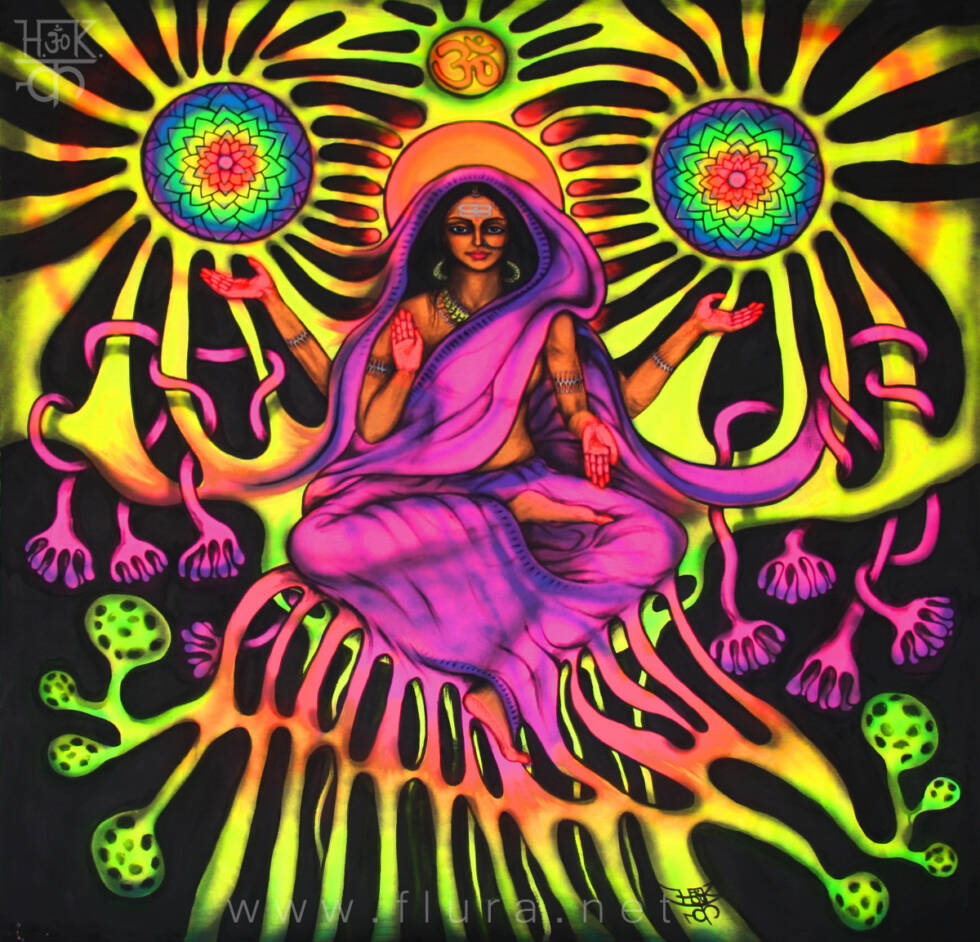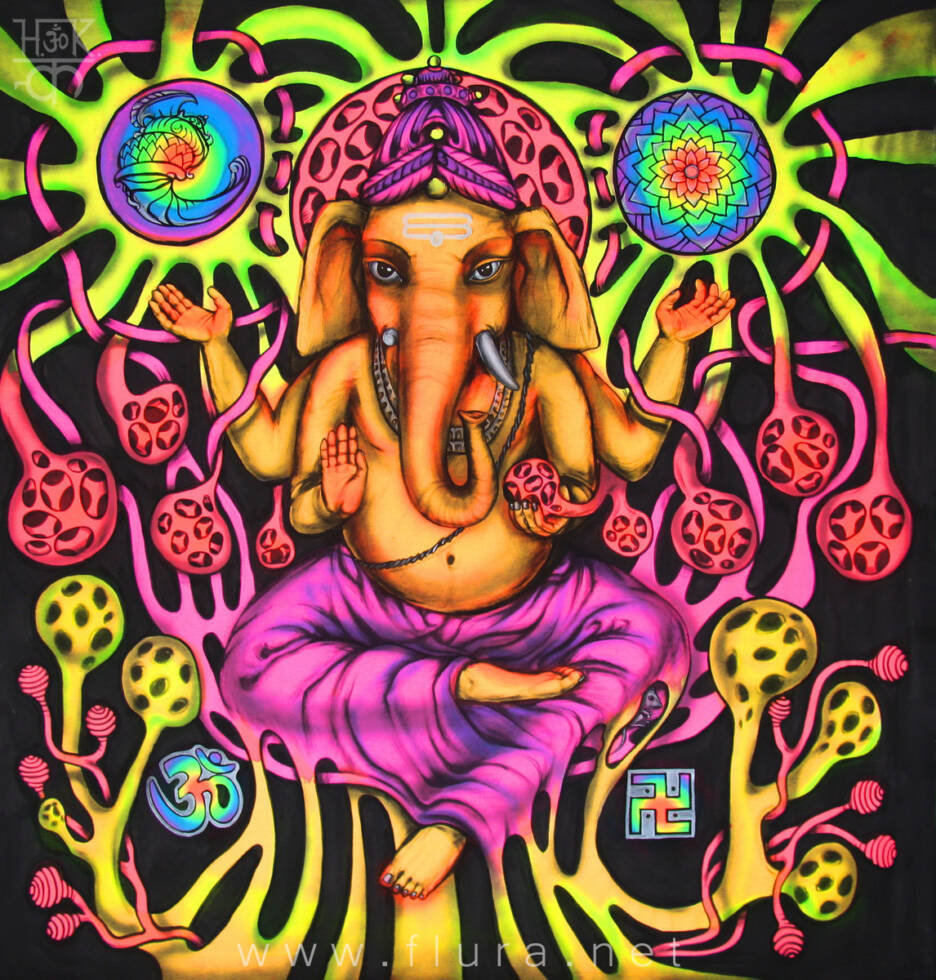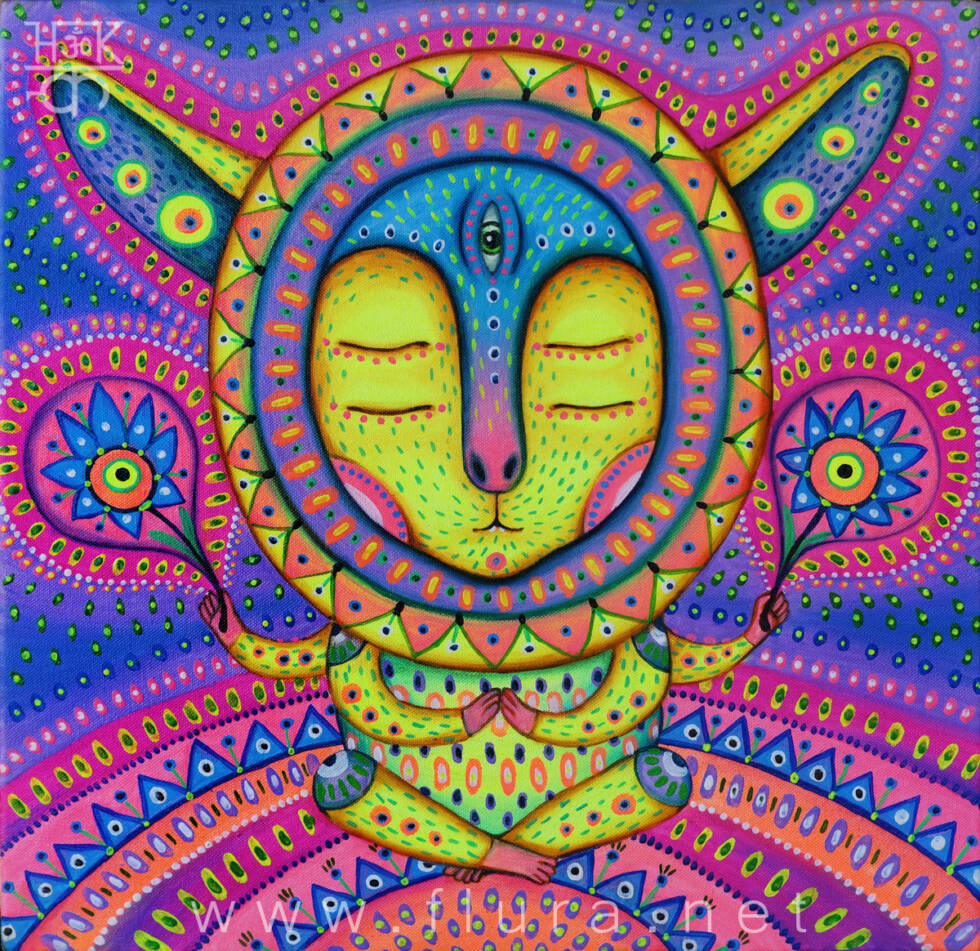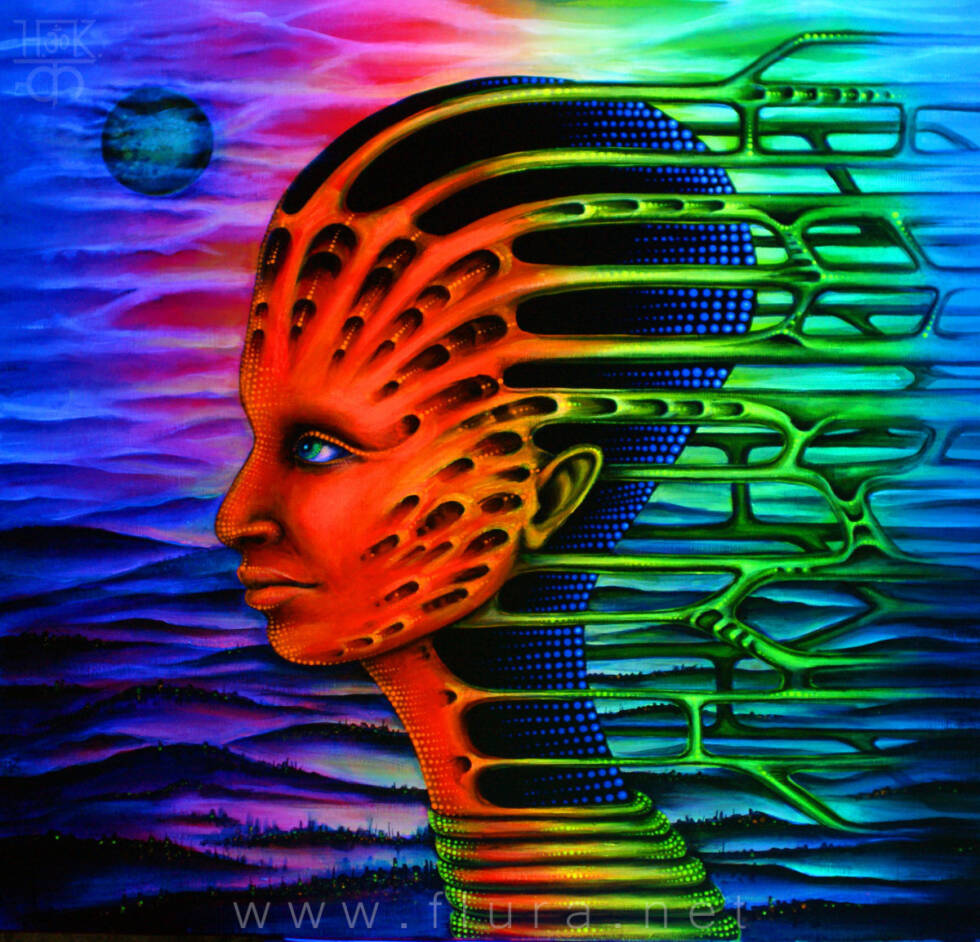Description
Painted on fabric with water-resistant fluorescent paints that are odorless. Material: 100% cotton. Washable. By Nita Kravets.
Parvati (IAST: Pārvatī) is the Hindu goddess of fertility, love and devotion; as well as of divine strength and power. She is the gentle and nurturing aspect of the Hindu goddess Shakti and one of the central deities of the Goddess-oriented Shakta sect. She is the mother goddess in Hinduism, and has many attributes and aspects. Each of her aspects is expressed with a different name, giving her over 100 names in regional Hindu stories of India. Along with Lakshmi (goddess of wealth and prosperity) and Saraswati (goddess of knowledge and learning), she forms the trinity of Hindu goddesses (Tridevi).[8]
Parvati is the wife of the Hindu god Shiva – the protector and regenerator of universe and all life.She is the daughter of the mountain king Himavan and mother Mena.[10] Parvati is the mother of Hindu deities Ganesha and Kartikeya. Some communities also believe her to be the sister of the god Vishnu and the river-goddess Ganga.[11][12]
With Shiva, Parvati is a central deity in the Shaiva sect. In Hindu belief, she is the recreative energy and power of Shiva, and she is the cause of a bond that connects all beings and a means of their spiritual release. In Hindu temples dedicated to her and Shiva, she is symbolically represented as the argha or yoni. She is found extensively in ancient Indian literature, and her statues and iconography grace Hindu temples all over South Asia and Southeast Asia.
Some scholars hold that Parvati does not explicitly appear in Vedic literature, though the Kena Upanishad (3.12) contains a goddess called Uma-Haimavati. Sayana’s commentary in Anuvaka, however, identifies Parvati in the Kena Upanishad, suggesting her to be the same as Uma and Ambika in the Upanishad, referring to Parvati is thus an embodiment of divine knowledge and the mother of the world. She appears as the shakti, or essential power, of the Supreme Brahman. Her primary role is as a mediator who reveals the knowledge of Brahman to the Vedic trinity of Agni, Vayu, and Indra, who were boasting about their recent defeat of a group of demons. But Kinsley notes: “it is little more than conjecture to identify her with the later goddess Satī-Pārvatī, although [..] later texts that extol Śiva and Pārvatī retell the episode in such a way to leave no doubt that it was Śiva’s spouse..” [IAST original]
Sati-Parvati appears in the epic period (400 BC–400 AD), as both the Ramayana and the Mahabharata present Parvati as Shiva’s wife.However, it is not until the plays of Kalidasa (5th-6th centuries) and the Puranas (4th through the 13th centuries) that the stories of Sati-Parvati and Shiva acquire more comprehensive details.Kinsley adds that Parvati may have emerged from legends of non-aryan goddesses that lived in mountains. While the word Uma appears in earlier Upanisads, Hopkins notes that the earliest known explicit use of the name Pārvatī occurs in late Hamsa Upanishad.
Weber suggests that just like Shiva is a combination of various Vedic gods Rudra and Agni, Parvati in Puranas text is a combination of wives of Rudra and Agni. In other words, the symbolism, legends and characteristics of Parvati evolved over time fusing Uma, Haimavati, Ambika in one aspect and the more ferocious, destructive Kali, Gauri, Nirriti in another aspect.[18][29] Tate suggests Parvati is a mixture of the Vedic goddesses Aditi and Nirriti, and being a mountain goddess herself, was associated with other mountain goddesses like Durga and Kali in later traditions.






